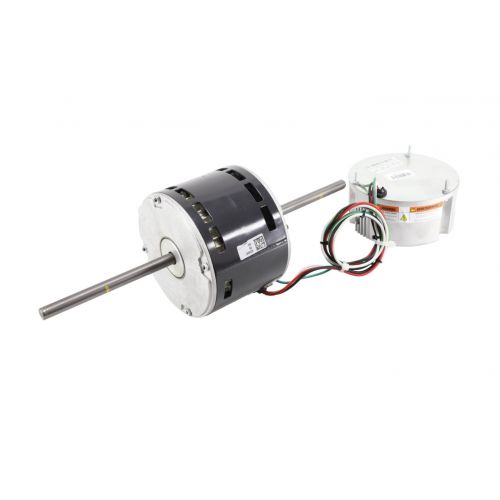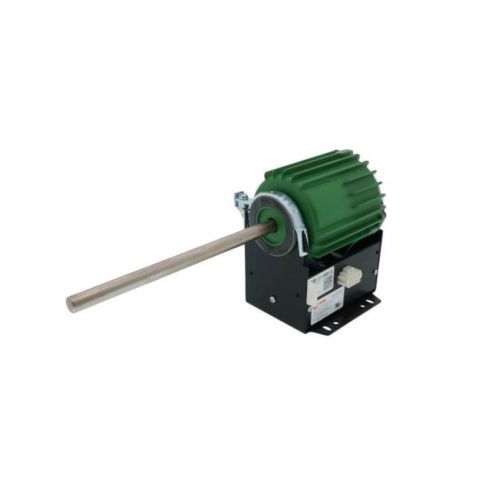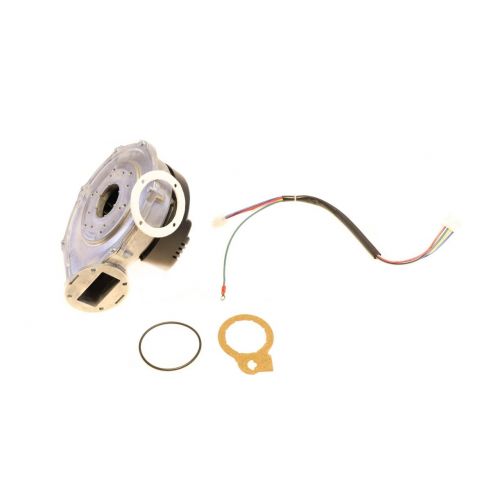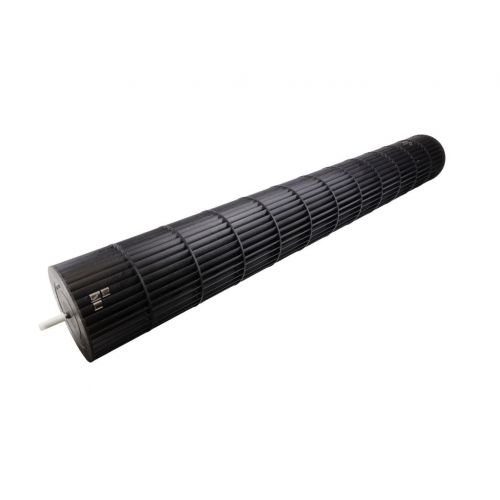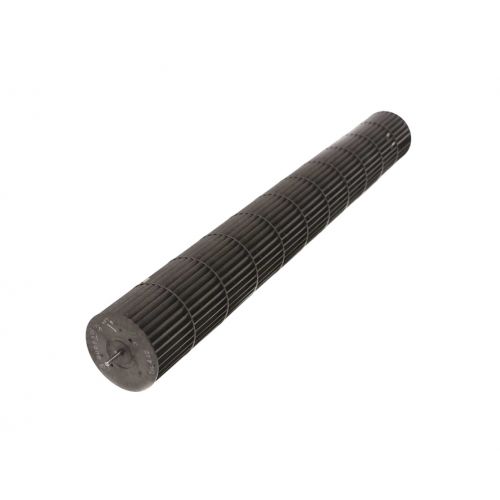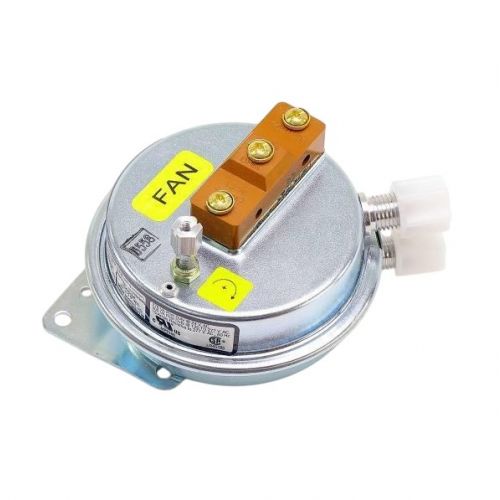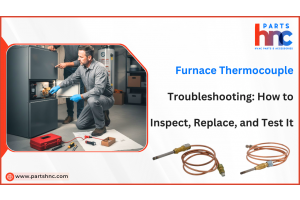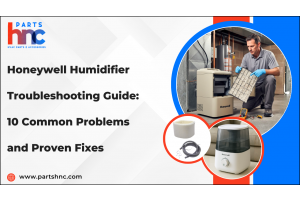Replacing Furnace Blower Motors: DIY Tutorial
The furnace blower motor is a vital component of your heating system, responsible for distributing warm air throughout your home. Over time, wear and tear can lead to a malfunctioning or inefficient motor, requiring replacement. While the idea of furnace blower motor replacement may seem daunting, it is a task that can be accomplished with the right knowledge and tools.
In this article, we will provide you with a step-by-step guide on furnace blower motor replacement, enabling you to restore optimal heating performance to your home. Also, we provide furnace blower motor cost, where to buy, and what are the top brands. So let's dive in and find out how to replace blower motor for furnace efficiently & effectively.
Where is the blower motor on a furnace?
Before you start replacing blower motor, it is important to find out the blower motor location. The blower motor on a furnace is typically located inside the furnace unit itself. It is situated near the bottom of the furnace, usually beneath the burner assembly. The motor is responsible for circulating air throughout the furnace system, pushing it through the ductwork and into the living spaces of a building. The blower motor works in conjunction with the heating or cooling components of the furnace to ensure proper airflow and temperature control. It is an essential component that helps distribute conditioned air effectively, allowing the furnace to operate efficiently and provide comfort in a home or building.
Know more about Why is your Furnace tripping your circuit breaker.
Signs Your Furnace Needs a New Motor Blower
Before we find out how to replace furnace blower motor, let us look at the top 10 signs of a failing blower motor for furnace are listed below:
Insufficient Airflow from the Vents
If you notice that there is no or very little air coming out of your air vents when you turn on the heat, it is a clear indication that something is wrong. One of the possible culprits could be a broken furnace blower motor. It is advisable to consider replacing it as the best course of action. However, keep in mind that other issues such as fan control problems, a faulty thermostat, or a bad relay can also cause a lack of airflow. Make sure to confirm that the blower motor is causing the airflow problem.
Rising Energy Bills
Among all the components in your HVAC system, the blower motor consumes the most energy. If you have been experiencing a steady increase in your energy bills, it could be a sign that your furnace is not operating efficiently. Decreased efficiency means that your furnace is working harder to produce the same amount of heat. There are several potential issues that can cause this problem, and it is recommended to contact a professional to assist you in replacing furnace blower motor.
Unusual Noises
Strange noises while your furnace is running can indicate a failing blower motor. These noises can manifest as clanking, squealing, rattling, or screeching sounds. If you hear any of these noises, it is advisable to contact a heating contractor for further investigation. Screeching and squealing sounds often point to bearing issues in the blower motor, while rattling or knocking noises may indicate damaged or broken components. Banging sounds are particularly serious and may require the complete HVAC blower motor replacement. A technician will conduct a thorough inspection to determine the cause of these noises.
Overheating Blower
If your furnace blower motor is overheating, it is a clear sign that a replacement is necessary. An overheating blower motor can be identified by a strange smell coming from the air vents. Additionally, if the blower stops working or shuts down completely while the heater is running, it indicates overheating. It is crucial to contact a licensed HVAC expert to address this issue promptly and prevent any potential electrical damage.
Limited Airflow from the Air Vents
Limited airflow from the air vents is often the initial indicator of a blower motor problem. However, other issues such as bad capacitors, leaky air ducts, or dirt accumulation can also lead to poor airflow. Excess moisture in the blower motor can also contribute to restricted airflow. If you notice poor airflow, it is recommended to have the motor inspected and serviced.
Constant Thermostat Adjustments
If you find yourself constantly adjusting the thermostat to achieve the desired temperature in your home, it may indicate a significant problem with the thermostat's wiring or a malfunctioning burner. It could also be a sign that your furnace requires a new blower motor to operate effectively. Consulting with a professional is advisable to diagnose and address the underlying issue.
Know more about the HVAC Glossary & Terms.
Cold Air Instead of Warm Air
If your furnace is blowing more cold air than hot air, it is essential to schedule an inspection. Several factors can contribute to the lack of heat production, including dirty air filters, blocked air ducts, or a clogged blower motor. Some of these issues may require the expertise of a professional to resolve effectively.
Furnace Fails to Power Up
A faulty blower motor can cause difficulties in turning on your furnace, especially as it ages. If you find yourself repeatedly restarting the furnace throughout the day, it is a cause for concern. This indicates that your unit needs to be evaluated and repaired or have the affected components replaced to resolve the issue.
Aging Blower Motor (15+ Years)
On average, the lifespan of a furnace is around 15 to 20 years, depending on factors such as the size of the home and maintenance practices. If your furnace blower motor has been in use for an extended period, you may start experiencing frequent breakdowns or major repair needs. In some cases, the blower motor might even shut down prematurely. If you find yourself in need of a furnace blower motor replacement, the cost typically ranges around $450.
Yellow Pilot Light
Under normal circumstances, the pilot light for your furnace should emit a steady blue flame, indicating that the blower motor is burning natural gas and operating optimally. However, if you notice a yellow pilot light, it could be a sign of a potentially hazardous carbon monoxide leak. Carbon monoxide is harmful to your entire household. If the yellow pilot light is flickering, it is crucial to contact your technician immediately to address the issue. In the long run, it is advisable to invest in a carbon monoxide detector for added safety.
Where Can I Buy a Furnace Blower Motor
If you're looking to buy blower motors for furnace, PartsHnC is your go-to destination. We supply a wide range of HVAC furnace blower parts from top-selling brands. But that's not all - we also offer other HVAC parts and accessories like circuit boards, control panels, compressor, evaporator coils etc. At PartsHnC, you'll find everything you need for your HVAC system at competitive prices. Shop with us today and experience exceptional service and quality products.
How Much Is a Blower Motor for a Furnace
When it comes to replacing a blower motor for furnace, the cost can vary depending on several factors. The blower motor itself typically ranges in price from $100 to $500, depending on the brand and model. However, it's essential to consider additional costs associated with the HVAC blower motor replacement process. The furnace motor replacement cost includes labor charges, which can range from $200 to $500, depending on the complexity of the installation and the technician's fees. Other expenses may include any necessary parts or accessories, such as belts or pulleys, which can add an additional $50 to $100 to the total furnace blower motor cost.
Steps For Furnace Blower Motor Replacement
Follow the below steps for replacing blower motor in a furnace:
Step 1: Disconnect the Furnace: When working on your furnace always do not forget to shut off the power and close the gas valve. Remove the top cover panel and blower cover panel.
Step2: Remove the assembly: Please wear safety gloves while accessing the blower assembly, the sheet metal can have a sharp edge so be careful. Now, unscrew the mounting screws, You might have to remove the control board if it’s mounted in front of the blower, I recommend you to take a picture so you will know how to reconnect the wires afterwards and now disconnect the wires then Unscrew and set the control board off to the side. Slide the blower assembly out
Step 3: Remove The blower motor : First loosen the screw that secures the blower wheel to the motor shaft, now, flip the assembly over and disconnect the ground wire (usually it’s green in color). If your model has a capacitor then disconnect the capacitor wire and remove it. Next, step is to use the Socket wrench to remove the mounting screws holding the motor and remove the motor and put it aside.
Step 4: Pull out the blower wheel and check whether it’s in a good condition or not.
Once you check the blower wheel carefully and If the blower wheel makes any sound while spinning then you have to replace the blower wheel.
Step 5: Replace blower motor furnace: Before removing the old motor take note and mark the position of the motor in the mounting bracket. Start to unscrew the bracket screws and remove the motor, by marking the position of the motor in the mounting bracket. By doing this, you will know exactly the position of the motor and you can replace blower motor furnace with a new one easily. Now, slide the new motor into the bracket and align the position of the motor with the mark which is before you have marked it in mounting brackets.
After this tighten the bracket screws and slide the motor shaft with a new motor into the blower wheel. Now align the screws with holes in the mounting bracket and tighten the screws and center the blower wheel and arrange the flat side of the motor shaft straight and start tightening the setscrew (please be careful while aligning the motor shaft). Reconnect the ground wire and replace the capacitor.
Step6: Replace the blower Assembly: Place the rails in a straight line and slide the blower assembly into place and secure the control board (which we have taken a snap to reconnect the wires properly). Reconnect the wires and tighten the mounting screws.
Step7: Reconnect the Furnace blower motor: Many furnaces have a switch that cuts power to the furnace if the blower cover is open. So, make sure that the panel is properly aligned and secure. Now open the glass valve and turn on the power to the Furnace.
Is a blower motor easy to replace?
Furnace blower motor replacement can be a relatively straightforward task, depending on your level of experience and knowledge. However, it is important to note that working with electrical components can be hazardous, so if you are unsure or uncomfortable, it is best to consult a professional. Generally, the process involves disconnecting power, removing the old motor, installing the new motor, and reconnecting the necessary components. Following the manufacturer's instructions and taking necessary safety precautions will help ensure a successful replacement.
Here is the Ultimate Guide to choose a right furnace.
Furnace Blower Motor Top Brands
When it comes to replacement furnace blower motor, several top brands have made a name for themselves in the industry. These brands are known for their high-quality products and reliable performance. If you're in the market for a new furnace blower motor, it's worth considering the following top brands:
Lennox: Lennox is a well-established brand that offers a range of heating and cooling solutions. Their furnace blower motors are known for their durability and efficiency. Lennox products are designed to deliver optimal performance while ensuring energy savings.
York: York is another reputable brand that specializes in HVAC equipment, including furnace blower motors. York blower motors are engineered for quiet operation and long-lasting performance. They prioritize energy efficiency to help homeowners save on utility bills.
Carrier: Carrier is a renowned name in the HVAC industry, known for its innovative and reliable products. Their furnace blower motors are designed to deliver efficient airflow and consistent temperature control. Carrier motors are built to withstand various conditions and provide excellent durability.
Rheem: Rheem is a trusted brand that offers a wide range of heating, cooling, and water heating solutions. Rheem furnace blower motors are engineered for quiet operation and enhanced efficiency. They focus on delivering optimal performance while minimizing energy consumption.
Goodman: Goodman is a reputable brand that provides affordable yet high-quality HVAC equipment. Goodman furnace blower motors are designed for reliable performance and energy efficiency. They offer a good balance of affordability and functionality.
Replacing furnace blower motor is a relatively straightforward process that can be accomplished with the right tools and some basic mechanical skills. By following the step-by-step instructions outlined in this article, homeowners can ensure their furnace operates efficiently and effectively for years to come.
FAQ's
What is the life expectancy of a furnace blower motor?
The average life of a furnace blower motor typically ranges from 10 to 20 years, depending on factors such as usage, maintenance, and overall quality of the motor.
Why do furnace blower motors fail?
Furnace blower motors can fail due to various reasons, including normal wear and tear, lack of maintenance, electrical issues, overheating, or motor bearing failure.
Is it worth it to replace a furnace blower motor?
Whether it's worth replacing furnace blower motor depends on factors like the age of the furnace, cost of the motor replacement, and overall condition of the system. A professional assessment can help determine if replacement is a cost-effective solution compared to repairing or replacing the entire furnace.
How to check furnace blower motor?
To check a furnace blower motor, inspect for unusual noise, ensure proper air circulation, and test for electrical continuity using a multimeter.



